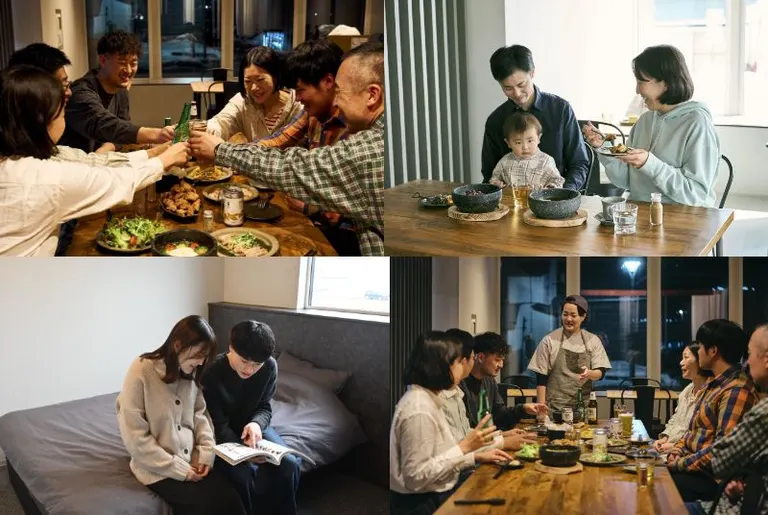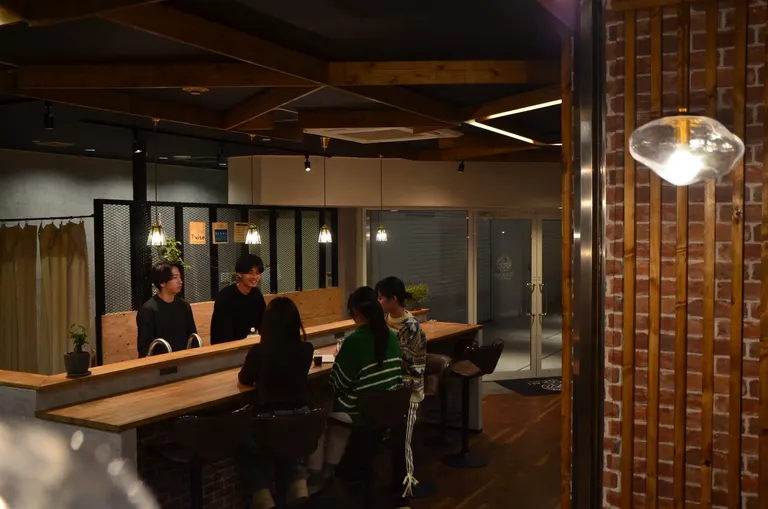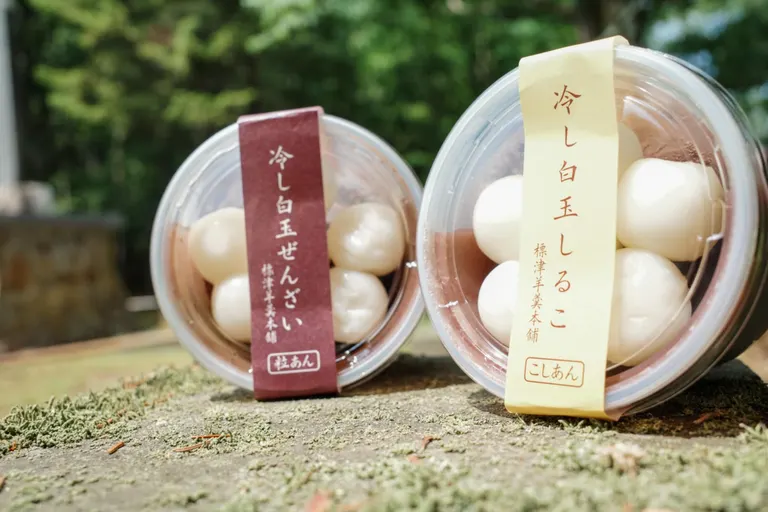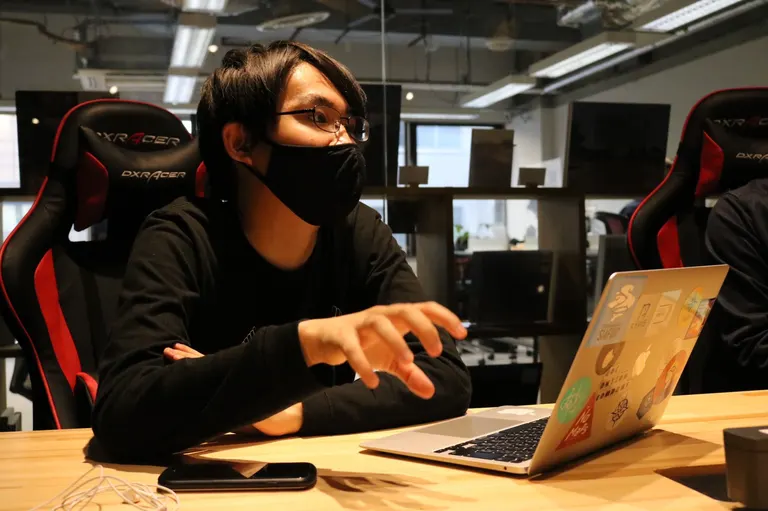
ARTICLES
Technology to solve the problems of local industries. Young entrepreneurs of the same generation from Hokkaido, focusing on training young engineers.
Shintaro Taneichi, who has been interested in urban and cultural development since high school, was greatly impressed when he encountered the idea that "Hokkaido, a vast island, has a wide variety of industries, and technology is the key to solving the problems that arise there.
He is now 21 years old. It has been almost a year since he established the general incorporated association "Unfinished" in order to nurture engineers of his generation who can solve problems in Hokkaido and to build a foundation where they can play an active role.
It is significant that Mr. Taneichi, who is of the same generation, is responsible for nurturing young engineers who will contribute greatly to solving issues in Hokkaido in the future. We are currently working on a major project that may change the future of young people in Hokkaido, and by extension, the future of the land of Hokkaido, by utilizing the community that we have built since our high school days.
Mr. Taneichi has been going to meet interesting adults and has been stimulated to take a flexible approach to things and implement them. We asked him about the process so far and his vision for the future.
Table of Contents
- A desire to make Sapporo a creative city.
- A fateful encounter with NoMaps led to the expansion of his activities.
- Where are the young people who want to become engineers in Hokkaido?
- We want to create an environment where engineers who grew up in Hokkaido can be active.
- We want to create a culture in Hokkaido that can be used as a model for other countries.
We want to make Sapporo a creative city.
When he was a high school student, Mr. Taneichi gathered together a group of inexperienced artists of the same age and gave them the experience of singing in front of an audience. He has always been interested in sociology, particularly in urban and cultural development, and was interested in how to create a positive environment for creators and how to create a creative city.
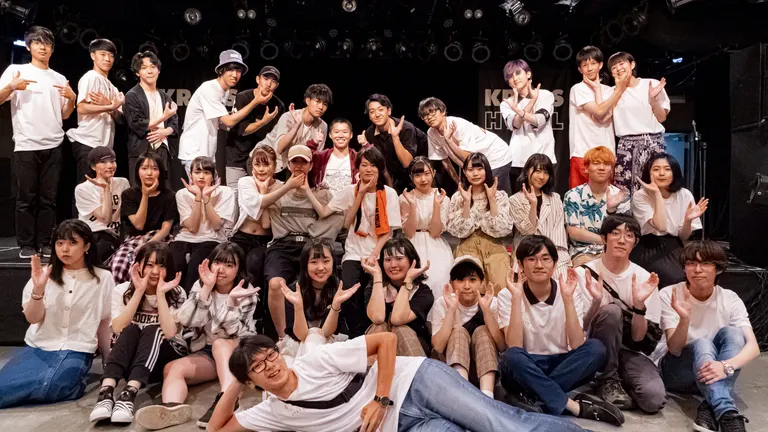
With a member who produced live performances when he was a student.
I was interested in how we could create a positive environment for creators to live and work. We thought it was the perfect city for creators to live and create things. However, there are not many creators in this area yet. I began to think vaguely about the possibility of making Sapporo a creative city while nurturing creators in the region. I began to think vaguely about this.
At that time, the owner of a community space run by Hokkaido University students invited me to an event and said, "Some interesting people are going to be there. He asked me to join him for an event on that day. That was "NoMaps.
NoMaps is a framework for creating new value in Hokkaido through five programs: conferences, exhibitions, events, exchanges, and experiments. Held for five days every fall, the program is enriched with more than 100 projects with a wide variety of guests.
The owner described Mr. Takeshi Hirose, the executive director of the NoMaps Executive Committee, as an "interesting person. Taneichi has had a vague idea of wanting to start a business since he was in junior high school, but had almost given up, thinking that it might be impossible for him.

Scene from an event in which Mr. Taneichi collaborated with Mr. Hirose of NoMaps during his high school years.
A fateful encounter with NoMaps expanded his subsequent activities.
Mr. Hirose said, "There are 179 cities, towns, and villages in Hokkaido, and each town has its own industry. There is no other area in Japan where so many different genres of industry are gathered in one place, nor where the population is so small despite such a vast area. This makes it the perfect place to conduct demonstrations and to gather cutting-edge products. He told us that in the future, rather than gathering cutting-edge products in Tokyo, the trend will be to try them out in Hokkaido and then bring them to Tokyo, and NoMaps will serve as a contact point for this. Hearing this, Taneichi was deeply impressed.
I felt as if my sense of discomfort about regional development was melting away," he said. I remember how impressed I was by the innovative position of Hokkaido as a first step for people working in Tokyo, rather than the closed world of Sapporo and the Little Tokyo approach to regional development, and it remains my belief to this day.
After the event, Mr. Taneichi couldn't help but say, "I want to do something with Mr. Hirose! After the event was over, Mr. Taneichi involuntarily said, "I want to do something with Hirose-san! At the end of the event, Mr. Hirose must have been quite surprised that the first person to approach him was a high school student wearing a school uniform.
Despite his surprise, he responded very politely, and in his senior year of high school he joined NoMaps as a student member, gradually increasing the number of opportunities for us to work together.
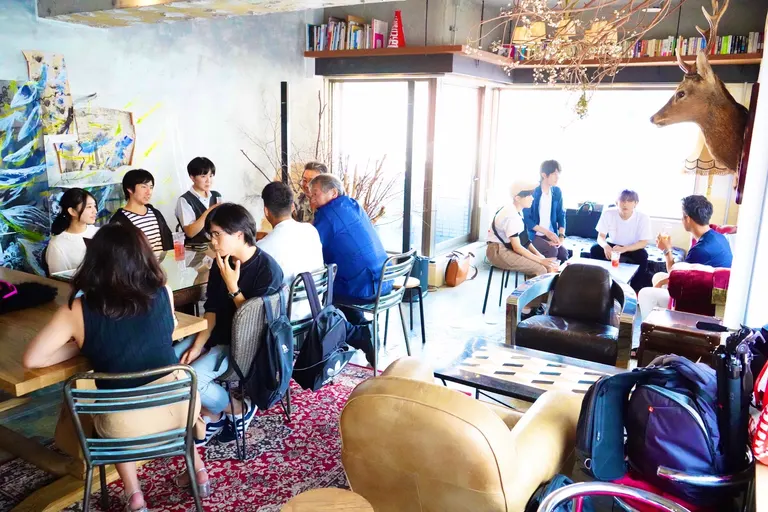
Since Mr. Taneichi joined NoMaps, various interesting sessions have been held so far!
Since Mr. Taneichi joined NoMaps, many interesting sessions have taken place, and the production of live performances has become even more intense with the help of NoMaps, including a five-day live event at several venues in Sapporo with the support of over a dozen companies. He developed the basic strength to "plan something big by involving a lot of people if you are going to do something. Eventually, Taneichi began to clarify what he wanted to do, including town development and support for creators.
Many really talented and creative children are not very good at presenting themselves," Taneichi said. Since NoMaps serves as a regional hub and base camp, I thought it would be a good idea to create a community where I could connect young people with interesting adults.

Taneichi's first company, IRENKA KOTAN (now renamed Social Change Lab LLC), was established in his junior year of high school. He began working energetically to establish an experimental community for students to connect with the activities of NoMaps.
Where are the young people in Hokkaido who want to become engineers?
However, due to the spread of the new coronavirus, real events were cancelled across the board.
So first we tried to get used to the online format, and for the first year we mainly held online events. We even had about 300 college students come together in one night because the coronavirus made it impossible to meet with people."
In addition to IRENKA KOTAN activities, he is also involved in online community management and entrepreneurship programs such as "BreakThrough," a program for high school students who want to become engineers held within NoMaps, and "STARTUP CITY SAPPORO," a Sapporo City initiative to support startup companies. I became actively involved in online community management and event management. In the process, a thought occurred to me.
There are many kids who want to be entrepreneurs, and they come to NoMaps when they want to do something. However, when the time came for entrepreneurs to find engineers, it was difficult to find them because there was no community where young engineers usually gather. The city of Sapporo has set a goal of increasing the number of start-ups, but there are no engineers. I didn't want more young people to say, "If that's the case, I'll leave for Tokyo. I thought, "From now on, we need to nurture talented engineers in Hokkaido.
It was during this time that I met Mr. Masayuki Kishimoto through an acquaintance. Mr. Kishimoto had invested in a company that operated a programming school in Tokyo, and he told Mr. Taneichi that he wanted to establish a programming school in his hometown of Hokkaido as well.
He said, "Hokkaido is going to have a shortage of engineers, so if we don't nurture them now, nothing will go forward. I had contacts with student groups, so I told them that now was a good time to gather young people and create a community, and they agreed to do it that day.
That is how the "Unfinished Project" was born in February 2021. Now, as a general incorporated association, Unfinished Project provides a place to learn, a place to meet with companies, and a place to experience social implementation in order to nurture engineers in the region.
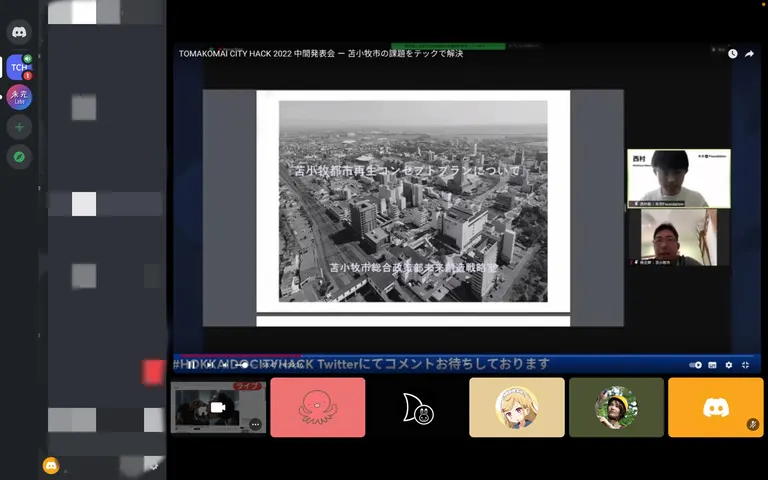
Part of the "Hokkaido Policy Project" conducted by Unfinished in collaboration with Tomakomai City. The local government is asked to come up with a problem, and Unfinished's supporting companies provide technical support while working side by side with the engineers to implement the project.
We also want to create an environment where engineers who grew up in Hokkaido can play an active role.
As Mr. Hirose said, Hokkaido has many industries, each of which faces various challenges. In the near future, there will be a movement to solve these issues with the power of technology. That is why Hokkaido needs engineers. Engineers who can dive in and solve problems on their own. I believe that Hokkaido is an area with many challenges, and it is precisely because of this that we can nurture such engineers.
We call engineers who can solve problems "makers. The target age group is under 25 years old. Currently, a total of 300 to 400 members participate in the program, and the youngest member is in the second year of junior high school. In addition to study groups, career support is also provided for university students. In addition to providing learning opportunities to nurture makers, they are working hard to create a model case in Hokkaido for the development of engineers by creating an environment in which they can play an active role in the local community.
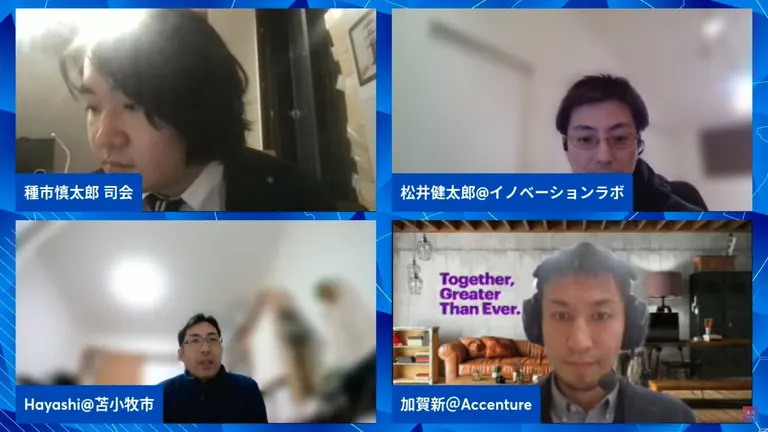
A meeting of the Hokkaido Policy Project. We value not only learning but also attacking actual problems, and we have a strong desire to "see the problems we have solved implemented in the world.
Many companies in Tokyo have been supporting the project, and the image of "Hokkaido engineers are known as 'unfinished'" has taken root in Hokkaido. I think our activities may have been a catalyst for the increase in projects targeting young people in Hokkaido since the company was established. It would be a very good thing if our activities were one of the reasons to support what young people want to do and to focus on nurturing young people.
We want to create a culture in Hokkaido that can be used as a model for other countries.
It has been one year since Unfinished was launched. Gradually, many high quality engineers are growing up. Based in Hokkaido, they are also able to intern at companies in Tokyo from a fully remote location. Some companies are planning to set up branch offices in Hokkaido because of the existence of Mimamitsu, which is a great influence.
We have recently joined a general incorporated association called Shibuya Future Design, an industry-government-academia partnership organization run by Shibuya Ward, as a public partner. In the future, I would like to focus on successfully matching IT firms in Shibuya Ward with unfinished engineers. For example, we would like to create a route for engineers who have gained experience in Tokyo to return to Hokkaido and start their own businesses. I find it rewarding that I am witnessing a situation where we may be able to create a good model case for the survival of the local region.
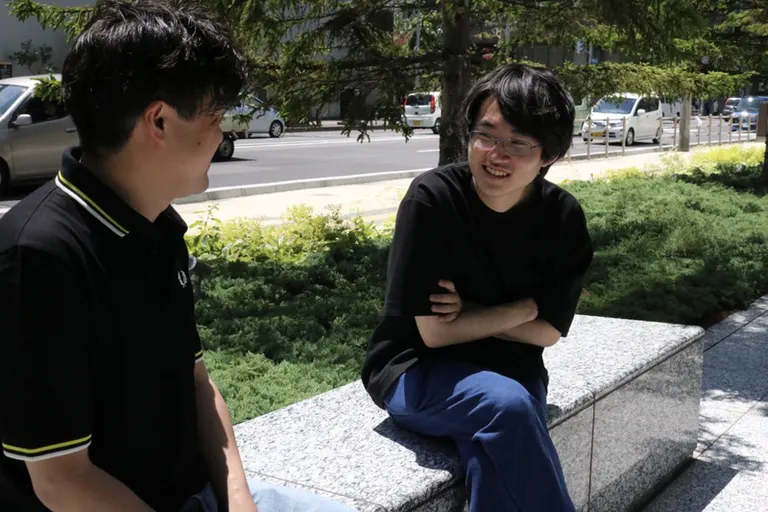
Of course, I am happy that the land I live in, Hokkaido, is being recognized, and I also find it interesting to be able to approach large and complex issues. He hopes to continue to create an environment where people can create their own culture in Hokkaido.
Because of the similarities in the environment and the size of the towns, many people in Hokkaido are trying to model their startup ecosystem (a system that supports the growth of startups through cooperation between the public, private, and academic sectors) after the Scandinavian model," he said. However, we would like to create Hokkaido's own model as well. It would be great if other countries facing similar challenges could choose that model as well. We are very happy to be able to define and create the future of Hokkaido ourselves, rather than just optimizing what is popular somewhere else.
We want to take pride and commitment in the fact that we are trying to create our own unique culture in Hokkaido. We want to be proud and particular about the fact that we are trying to create a culture unique to Hokkaido, and we want to make sure that people know that the model we have created originated in Hokkaido. Mr. Taneichi's wish will be fulfilled little by little. The activities of young engineers are gradually growing.
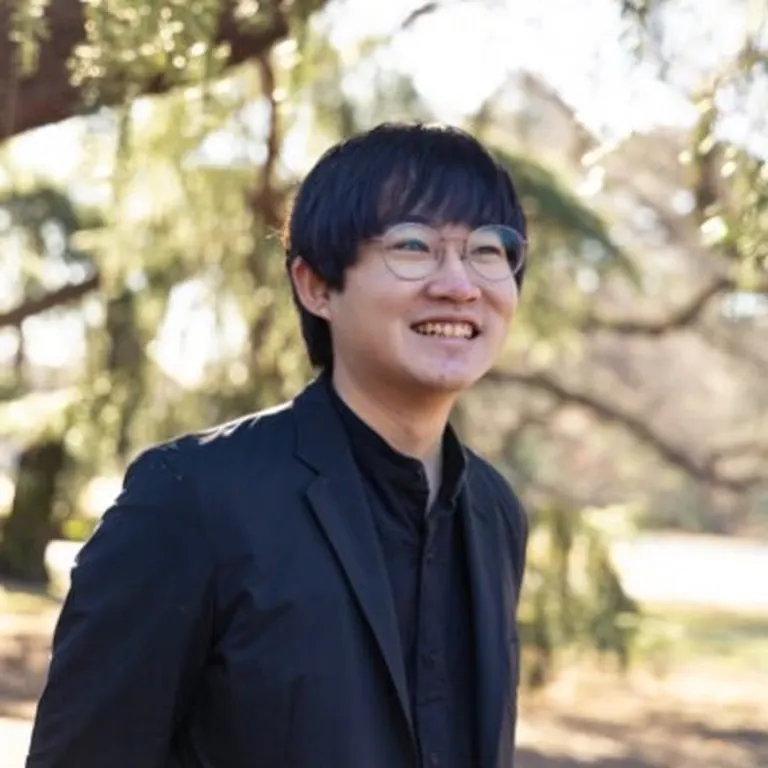 Shintaro Taneichi
Shintaro Taneichi
As a representative producer of Social Change Lab, produces new businesses for companies and provides consulting services for industry-academia collaboration with the theme of catalyzing social change. Specializes in new business development for municipalities and large companies such as Sapporo City, NHK, and the Hokkaido Election Administration Commission. At Uncompleted General Incorporated Association, he trains engineers and coordinates demonstration experiments in collaboration with local governments and major consulting firms. He incorporated this activity and founded "Social Change Lab" to launch and manage social projects together with the youth generation.
To learn more about Shintaro Taneichi, click here!
Domingo Local Player Page
Writer Profile
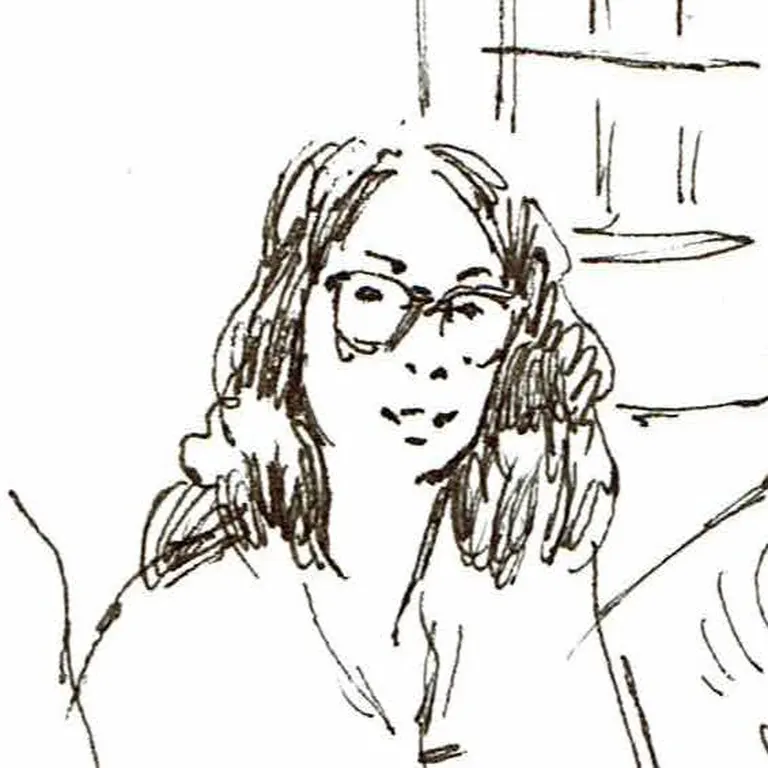 Satoko Nakano
Satoko Nakano
I was born and raised in Tottori Prefecture, which has the smallest population in Japan. After graduating from high school, I moved to Tokyo and lived in Tokyo for 20 years before moving to Kimobetsu-cho with my family in August 2017. I enjoy the clean air and heavy snowfall at the foot of Mt. Yotei and the warmth of the people every day.






